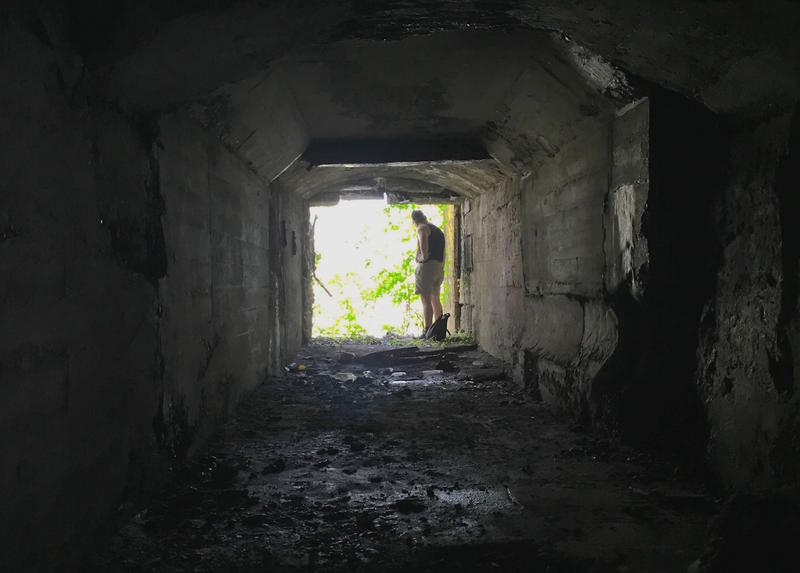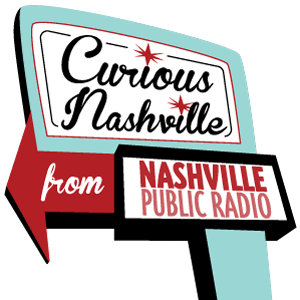
We spent quite a bit of time shining flashlights around dark, cobwebby places over the past few weeks — because of Curious Nashville, a project in which we answer your questions about the city.
The winning question from our last round of voting came from veteran Nashville record producer Mitch Dane.
I’ve heard rumors of a mysterious tunnel system winding beneath downtown Nashville. Is this true?
To learn what we found about the tunnels of Nashville, listen to the full story above. And you can follow along with our visual appendix below.
Subscribe to Curious Nashville on iTunes. You can also listen on Google Play or other podcasting apps.
The Question-Asker
Dane seeks out adventures — usually off-roading on his motorcycle — and the idea of tunnels is right up his alley.
“It seems like everyone’s heard about something, but no one knows facts … it’s all hearsay,” he said. “And it all may be a rumor. But what if it’s not?”
Some say politicians built an escape route from the state capitol to the Cumberland River. Others say passages were used by slaves fleeing along the Underground Railroad. Or, maybe during Prohibition, bootleggers moved moonshine this way underneath the notorious Printer’s Alley.
I: The Cadaver Tunnel
This tunnel comes with one of the creepiest stories: that of cadavers being wheeled underground from one building to another across Rutledge Hill, south of downtown. This area used to be home to a pair of medical universities, the first city hospital, the morgue, and Litterer Laboratory (see map).
Their connection is described in a 1972 article.
There’s no question that the building has the mouth of a tunnel in the basement, but what it was for is less clear.
On paper, it’s tough to get a cadaver tunnel to exist. I interviewed the developer who turned the hospital property into condos, and an engineer who helped dig the foundations. I also looked at old photos, maps, blueprints (see building blueprint) and read early documents.
The other possibility for a connection is Lindsley Hall, across the street. It used to be a medical college (see map). Here’s how the basement now looks:
A pile of blueprints in the basement shows skinny pipes, but nothing tunnel-sized.
II. The River Tunnel
I had a few dozen people email me photos after WPLN published initial findings.
I also kept trolling around online, and one of the most important things to surface is a photo from the @AbandonedNashville account on Instagram.
The man who shot this photo calls it the “Prohibition tunnel” and thinks it was used to smuggle liquor in and out of downtown Nashville. But when I looked at it, I thought it made more sense as a possible connection to the state capitol, largely based on its position beneath the Gay Street Connector.
The path to this tunnel requires a harsh journey along about 300 yards of steep and rocky riverbank, including some scooching along a rocky bluff.
It took about an hour to reach it, and then it demanded some rock-climbing skills.
There’s no writing or graffiti inside, and hardly any garbage.
Here’s how the tunnel looks about 50 feet in.
So what was this tunnel for?
Even stepping inside it doesn’t tell me the answer.
So I return to a pair of favorite tools: old maps and property documents. I go as far back as possible. Tom Sealy in the Register of Deeds office shows me some maps, hand-annotated, in 1888. And the cursive handwriting on one deed, from 1903, is almost illegible.
These records show what used to be on the block above the tunnel, known as Front Street and 1st Avenue North over the years. It became home to the city’s first electricity and streetcar companies. (Work began in 1901.)
Giant riverside powerhouses at this site would burn through 200 tons of coal each day.
On the map, we can see exact locations of big fans, engines, vents and chimneys.
I triangulate where I was in the tunnel — it would have been beneath a room with rows of generators known as dynamos. It’s a place that likely needed large amounts of water to flow in and out.
So, no sign of escape or smuggling. Instead, a pretty vivid picture of the industrial past and a crucial development in the history of Nashville.
III. Beneath Printer’s Alley
If there’s one tunnel that garners the most rumors, it’s the one beneath historic Printer’s Alley, the longtime home of gambling, booze, prostitution and other debauchery (see map from 1914).
I go with our question-asker, Mitch Dane, to see a tunnel that property owners say predates Prohibition and connects several basements. Beneath one building, there’s an old bank vault (see map).
In the basement of “Events on Third” we find a hole in a brick wall.
Peering through it, we see a brick room, or hallway, maybe 20 feet long. It’s a mix of big stones and bricks — including an arched ceiling — and the walls reveal the shapes of several possible passages.
But these days, they’re bricked over.
So after weeks of searching, about 50 pages of notes, and a few scrapes, I’d found some evidence of what Mitch was looking for. Yet I haven’t found definitive proof of what these tunnels were used for.
Can we continue believing in stories of escape and smuggling? Or are the facts, with a little bit of uncertainty, just as intriguing?
Credits:
Curious Nashville is produced by Nashville Public Radio and the questions are selected by our listeners. This episode was edited by Emily Siner, our assistant news director.
Music in the episode came from Chicago’s Ampersand Posture and from the Free Music Archive, including Kai Engle and David Szesztay.


